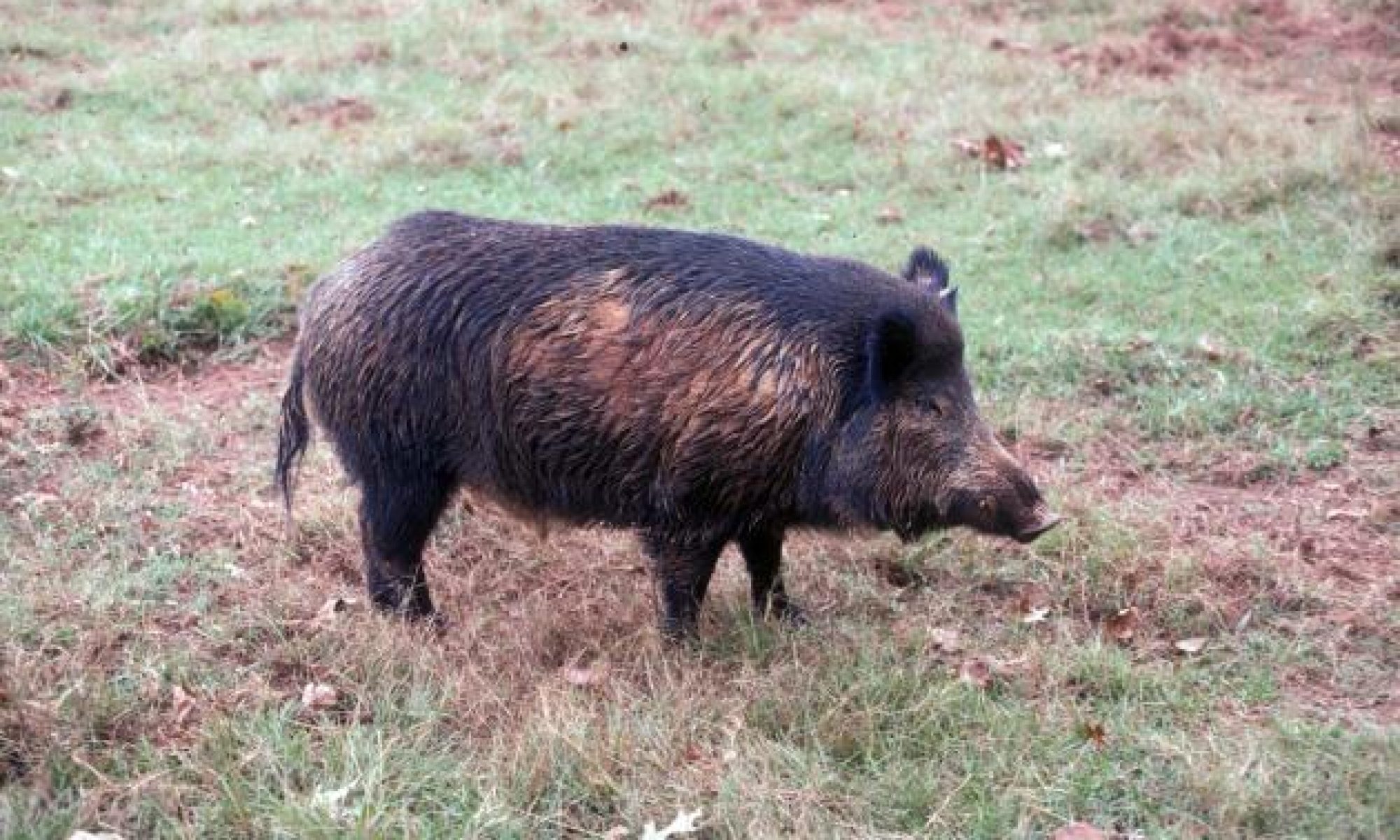Corral traps are very popular methods of trapping undesired feral hogs by landowners. As with any method, there are a number of advantages and disadvantages associated with their construction and deployment.
Advantages
• Corral traps are effective for capturing entire sounders (groups) of hogs.
• Deer are able to escape the open top.
• Can be located in areas with ongoing hog use.
Disadvantages
• Can be expensive and time-consuming to construct.
• Not easily moved and are more permanent than a box trap.
• Pre-baiting can be costly both financially and in time.
Materials
-
Lifting head/rooter gate
-
13 T-posts (6-ft)
-
4 utility panels, 16 ft long by 52 inches tall
-
Roll of tie wire (bailing wire)
-
T-post driver
-
Lineman’s pliers or fencing tool
-
4 ft long 2-by-4
-
Hook and eye latch (4-inch)
Steps
-
Set the head gate. A lifting/rooter gate is used here; however there are many other types of head gates available. The head gate can be secured with steel T-posts on each side of the entrance and attached to the gate with doubled bailing wire to provide additional strength. Make certain the T-posts are set flush and securely against the side of the head gate.
-
Attach a panel to each side of the head gate T-posts with doubled bailing wire.
-
Then, wire the utility panels together with bailing wire, overlapping each panel by one square.
-
After the panels are wired together shape the trap, the number of T-posts needed depends on the number of panels and the shape of the trap.
-
Once the trap is shaped, use T-posts to anchor the trap at 4 ft intervals. If the trap is set in a wooded area the panels can be wired to trees for extra support. The number of T-posts may seem excessive, but feral hogs are extremely strong and can escape from poorly built traps.
|
|
|
Figure 1. Corral trap with lifting rooter gate. Photo courtesy of Texas AgriLife Extension |
|
|
| Figure 2. Lifting rooter gate. Photo courtesy of Texas AgriLife Extension |
|
|
| Figure 3. Trigger mechanism on lifting rooter gate. Photo courtesy of Texas AgriLife Extension |



